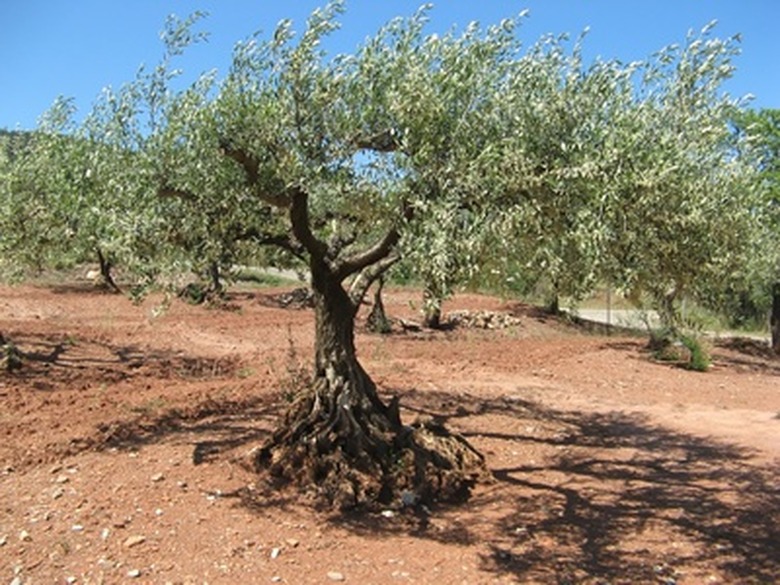Olive Trees Life Cycle
A native to the Mediterranean, olive trees can live for centuries. Their life cycle is highly dependent on whether or not they are grown in the right climate conditions. However, the tree also has a tremendous ability to persevere despite harsh conditions and neglect from farmers and gardeners.
Seedlings
Cultivated varieties of olive cannot be propagated by seed. If grown from seed, the plant will revert to its smaller, wild variety. One popular method of propagating olive trees is from cuttings. Take the cutting from wood on the tree that is at least two years old in August or September. The cutting should be approximately 8 to 12 inches long. Remove the lower leaves and plant the cutting in a standard potting mix of peat, perlite and sand. Water regularly. In six to eight weeks the cutting will be begin to set roots.
- A native to the Mediterranean, olive trees can live for centuries.
- However, the tree also has a tremendous ability to persevere despite harsh conditions and neglect from farmers and gardeners.
Root Growth
At three to four years of age, olive trees will form a bundle of slender, small roots known as a fascicles. These roots will continue to grow and expand with age. The roots of an olive tree extend out to a large area of soil as they search for nutrients and water. Olive trees are drought-tolerant, though regular, deep watering will benefit their fruit set.
Fruit Production
At about five years of age olive trees will begin to bear fruit. Fruit only develops on branch growth from the previous year, so take care in pruning to not remove older wood. Olive trees are pollinated primarily by the wind, but their flowers can be damaged by heavy winds. Fruit develops in the fall, unlike many other fruit trees that bear fruit in the late spring or summer.
- At three to four years of age, olive trees will form a bundle of slender, small roots known as a fascicles.
- Olive trees are drought-tolerant, though regular, deep watering will benefit their fruit set.
Maturity
Olive trees, at full maturity, can grow to be 50 feet tall and up to 30 feet in width. Trees that are under cultivation are often pruned to maintain a growth habit of about 20 feet. Temperature is the most important factor in how well an olive tree grows. Trees are susceptible to extreme cold, particularly frozen soils. Yet, they also require a period of cool nighttime temperatures and warm daytime temperatures to bear fruit. This is why olive trees are well suited for Mediterranean climates, and why most cultivation in the United States only takes in California.
Life Span
Olive trees can live to be over 500 years old. Additionally, they have an ability to regrow if cut down or damaged. With such a long life span, the trees can obviously withstand a great deal of neglect, damage and temperature fluctuations.
- Olive trees, at full maturity, can grow to be 50 feet tall and up to 30 feet in width.
